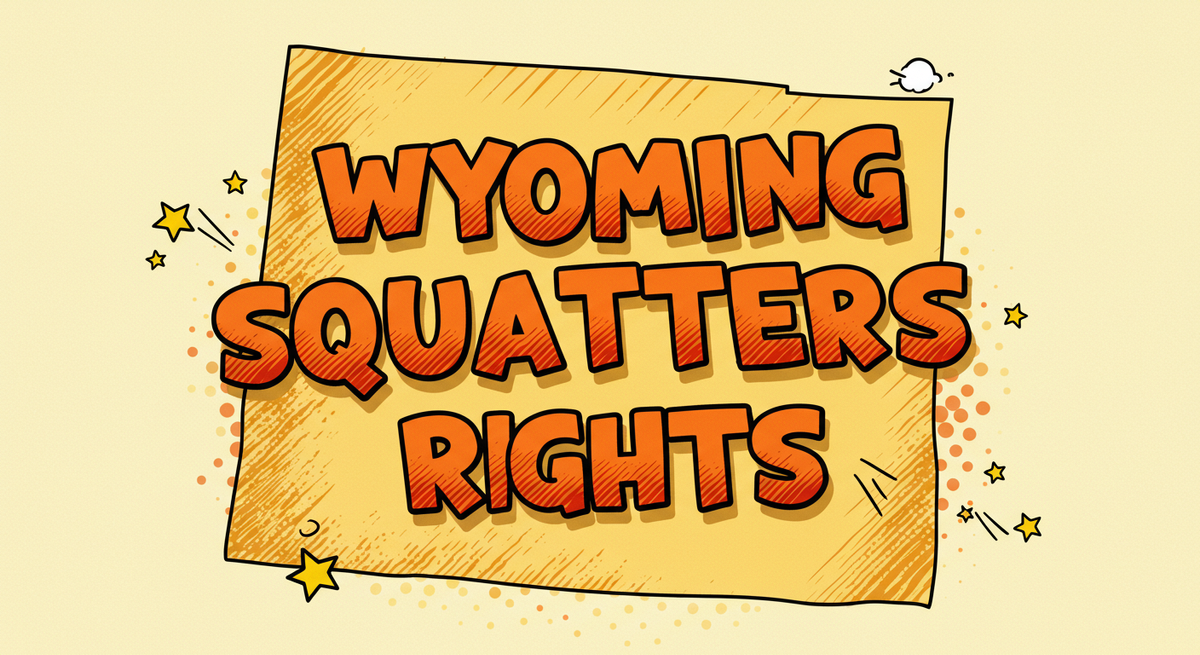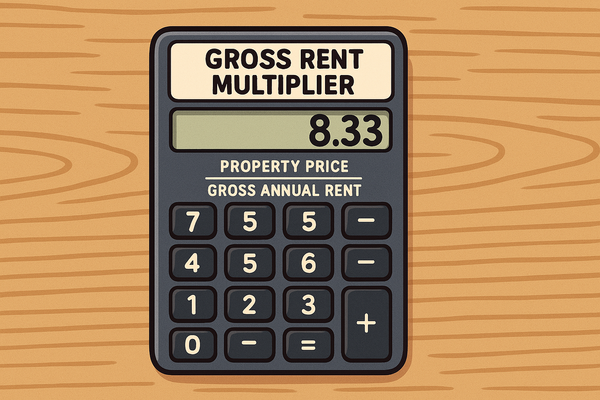Wyoming Squatters Rights Guide: Understanding Adverse Possession Laws
When squatters remain on a property for the statutory period (10 years in Wyoming) and meet specific legal requirements, they may potentially claim ownership through adverse possession laws.

Introduction to Squatters' Rights in Wyoming
- Definition of squatters vs. trespassers in Wyoming
- Basic overview of adverse possession in Wyoming
- Why property owners should understand these laws
- Historical purpose of adverse possession laws
Wyoming property owners face unique challenges when dealing with adverse possession claims and squatters. While Wyoming has traditionally followed standard adverse possession doctrine, recent legislative changes have significantly strengthened protections for property owners against unauthorized occupants. Understanding the distinction between legitimate adverse possession claims and illegal squatting is crucial for protecting your property rights in Wyoming.
In Wyoming, a squatter is someone who occupies a property without legal right or permission from the property owner. This differs from a trespasser, who is generally considered someone making unauthorized entry for a brief period. When squatters remain on a property for the statutory period (10 years in Wyoming) and meet specific legal requirements, they may potentially claim ownership through adverse possession laws.
The historical purpose of adverse possession laws was to ensure productive use of land and resolve boundary disputes. These laws originated when property records were less reliable, encouraging landowners to monitor and maintain their properties rather than allowing them to remain vacant and unused.
Squatter Snippet: Real Case from Wyoming
In autumn 2024, Casper property owner and realtor Ronna Boril experienced a shocking squatter situation that gained national attention and became a catalyst for legislative reform in Wyoming's approach to squatting.
Days after legally evicting a tenant for nonpayment, Boril discovered six unauthorized occupants in her rental property. The squatters had entered into a subleasing arrangement with the former tenant, who fabricated a lease agreement after being evicted.
When Boril arrived to clean the property, she encountered six to eight individuals occupying the home, significant property damage including broken fixtures and walls, and a confrontational situation requiring law enforcement intervention.
The case unfolded through formal eviction proceedings, with squatters occupying the property for 17 days before removal. Post-eviction inspection revealed approximately $12,000 in damages (unrecoverable as squatters left no assets).
This case directly influenced Wyoming's Senate File 0006 (2024), creating felony charges for property damage during squatting, establishing an expedited removal process for unauthorized occupants, and allowing criminal charges for lease fraud.
Key Timeline: Statutory Period in Wyoming
- Required occupation period: 10 years in Wyoming
- Continuous possession requirement: Occupation without significant gaps
- Comparison with neighboring states:
- Colorado: 18 years, requires Color of Title, must have paid taxes for 7 years
- Idaho: 20 years, requires Color of Title, must have paid taxes for 5 years
- Timeline exceptions:
- Military service
- Incarceration
- Legal incompetence/disability
CHART: Adverse Possession Timeline Comparison
| State | Required Years | Special Conditions |
|---|---|---|
| Wyoming | 10 years | No tax payment or color of title requirement |
| Colorado | 18 years | Requires Color of Title; must pay taxes for 7 years |
| Idaho | 20 years | Requires Color of Title; must pay taxes for 5 years |
Quick Guide for Property Owners
Wyoming has traditionally had more lenient adverse possession laws than neighboring states, with a relatively short 10-year statutory period and no requirements for tax payment or color of title. However, recent legislative changes have significantly strengthened protections against squatters, particularly through criminal penalties for property damage during unauthorized occupation.
A notable case occurred in Casper in 2024, when property owner Ronna Boril discovered six squatters in her rental property who had obtained a fraudulent lease from a recently evicted tenant. This incident cost Boril approximately $12,000 in damages and prompted legislative reform to protect property owners.
- Know your timeline: Squatters can claim rights after 10 years of continuous occupation
- Documentation matters: Keep property records, tax receipts, and inspection logs
- Regular monitoring required: Vacant properties are most vulnerable
- Legal obligation: Self-help eviction methods are illegal in Wyoming
- Act quickly: The longer squatters remain, the stronger their potential claim
- Proper notices: Follow legal procedures when removing unauthorized occupants
Prevention: Protecting Your Property
In Wyoming, protecting your property from adverse possession claims and squatters requires vigilance, especially for rural or seasonal properties where regular monitoring may be challenging. Wyoming's harsh winters and large, often remote, properties create unique circumstances that may leave sections unmonitored for extended periods, potentially making them vulnerable to adverse possession claims based on seasonal use patterns.
Wyoming courts place significant emphasis on visible evidence of property monitoring and security measures when evaluating adverse possession cases. The most common entry points for squatters in Wyoming are vacant or seasonally-used properties, particularly those that show signs of neglect or abandonment.
- Regular inspections:
- Visit property at least quarterly
- Document each visit with photos/notes
- Effective security measures:
- Secure all entry points
- Consider alarm systems
- Install motion-activated lighting
- Clear signage:
- Post "No Trespassing" signs visibly
- Mark property boundaries clearly
- Property management options:
- Hire professional management for vacant properties
- Consider rental options for long-term vacancies
- Documentation practices:
- Keep tax payment records
- Maintain utility connections
- Take dated photographs regularly
CHART: Property Risk Assessment Matrix
| Property Type | Risk Level | Recommended Prevention | Estimated Cost |
|---|---|---|---|
| Vacant Land | High | Boundary markers, regular visits, proper signage | $-$$ |
| Abandoned Building | High | Security systems, property management, frequent monitoring | $$$-$$$$ |
| Seasonal Property | Medium | Off-season monitoring service, security systems | $$-$$$ |
| Investment Property | Medium | Professional property management, regular inspections | $$-$$$ |
Removing Squatters: Step-by-Step Process
Wyoming's recent legislative changes have significantly streamlined the process for removing unauthorized occupants from properties.
Senate File 0006, approved in late 2024, created an expedited process for property owners to request law enforcement assistance in removing squatters, making Wyoming one of several states (including Alabama, California, Florida, Georgia, Nevada, Tennessee, Washington, and West Virginia) with specific anti-squatting legislation.
Under Wyoming Statute § 1-3-103 and the new anti-squatting law, property owners now have stronger legal tools to address squatting situations. The law specifically differentiates between legitimate landlord-tenant disputes (which still follow civil eviction procedures) and squatting situations (which can now be addressed through criminal law).
- Document the situation:
- Take photos/video of occupation
- Gather ownership documents
- Issue proper written notice to vacate
- File appropriate legal complaint:
- Wrongful detainer action in Wyoming
- Include all required documentation
- Attend court hearing
- If successful, obtain order of restitution/eviction
- Sheriff enforces removal, not property owner
- What NOT to do:
- Do not change locks yourself
- Do not shut off utilities
- Do not remove squatter's belongings
- Do not threaten or intimidate
- Do not use physical force
- Timeline expectations:
- Notice period: 3 days
- Court processing: 1-4 weeks
- Eviction enforcement: 2-5 days after judgment
CHART: Eviction Process Timeline
Under Wyoming's traditional eviction process, removing squatters could take approximately three months to complete, often frustrating for property owners dealing with true squatters rather than tenant disputes. Recent legislative reform has created a significantly expedited process specifically for unauthorized occupants.
The Wyoming eviction process for unauthorized occupants now follows these specific timeline requirements, as codified in Wyoming's civil procedure codes. Recent court data from Wyoming's judicial system indicates that with the new legislation, unauthorized occupants can typically be removed much more quickly than under the previous system, with average processing times reduced by 50-75%.
[Discovery of Squatter] → [Documentation: 1-2 days] → [Notice to Vacate: 3 days] →
[Court Filing: 1 day] → [Waiting for Hearing: 1-2 weeks] → [Court Hearing: 1 day] →
[If successful, Wait for Order: 1-3 days] → [Sheriff Enforcement: 2-5 days] → [Property Returned]
Total estimated timeline: 2-4 weeks
Legal Requirements for Adverse Possession
In Wyoming, adverse possession claims are evaluated using the "OCEAN" criteria (Open, Continuous, Exclusive, Adverse/Hostile, Notorious) as interpreted by Wyoming courts. Wyoming case law, particularly Little Med. Creek Ranch, Inc. v. D'Elia (2023) and Tuckness v. The Town of Meeteetse (2024), has shaped the interpretation of these elements.
Wyoming courts apply a strict burden of proof standard, requiring clear and convincing evidence for each element of adverse possession.
- Hostile Claim
- Definition and examples in Wyoming case law
- Common misunderstandings
- Actual Possession
- Physical requirements
- Evidence courts look for
- Open and Notorious Possession
- Visibility standards
- Documentation and evidence
- Exclusive Possession
- Single-party occupation requirements
- Exceptions and interpretations
- Continuous Possession
- Time requirements specific to Wyoming
- Allowed exceptions or gaps
- Special circumstances (military service, incarceration)
CHART: Adverse Possession Requirements Matrix
| Requirement | Required in Wyoming? | Evidence Courts Accept | Common Pitfalls |
|---|---|---|---|
| Hostile Claim | Yes | Observable actions claiming property against owner's rights | Permission from owner at any point defeats claim |
| Actual Possession | Yes | Physical occupation, structures, cultivation | Occasional or limited use insufficient |
| Open & Notorious | Yes | Visible use apparent to community and owner | Hidden or concealed use invalidates claim |
| Exclusive | Yes | Sole control, fencing, posted signs | Shared use with owner defeats claim |
| Continuous | Yes | Uninterrupted use for full 10-year period | Seasonal use may be insufficient |
Frequently Asked Questions
- "Can I remove squatters myself?"
- No, self-help eviction is illegal in Wyoming
- Must follow legal eviction process
- "Do squatters have to pay property taxes?"
- Tax payment may strengthen adverse possession claim
- Not required in Wyoming (unlike neighboring states)
- "What's the difference between a squatter and a trespasser?"
- Trespassers: Short-term unauthorized presence
- Squatters: Ongoing occupation with potential adverse possession claim
- "Who should I contact first - police or sheriff?"
- For immediate safety concerns: Police
- For eviction enforcement: Sheriff
- "Can squatters claim abandoned property?"
- Yes, if all adverse possession requirements are met
- Abandonment may actually strengthen their claim
- "How quickly can I evict a squatter?"
- Typical timeline: 2-4 weeks under new legislation
- Factors affecting timeline: court schedule, appeals, evidence quality
CHART: Decision Tree for Property Owners
Wyoming's specific laws influence decision-making when encountering unauthorized occupants, with important distinctions between criminal trespass and civil squatting under Wyoming law. According to Wyoming's law enforcement protocols for handling property disputes, the response depends on several key factors, including timing of discovery, evidence of established occupation, and potential danger.
Discovered Someone on Your Property
├── Emergency/Dangerous Situation? → Yes → Call Police
│ └── No ↓
├── Recent Entry (Less than 24 hours)? → Yes → Call Police (Trespasser)
│ └── No ↓
├── Evidence of Established Occupation? → Yes → Legal Eviction Process Required
│ └── No ↓
└── Uncertain Situation → Consult Attorney Before Taking Action
Recent Legislative Changes in Wyoming
Wyoming's approach to squatters and adverse possession has evolved significantly in recent years, with several important legislative changes aimed at strengthening property owners' rights and addressing squatting concerns. The most notable recent legislation is Senate File 0006, approved in late 2024, which represents a significant shift in how Wyoming addresses unauthorized property occupation.
This legislation was directly influenced by high-profile squatting incidents, including the case in Casper involving Ronna Boril, where six squatters occupied a rental property using a fraudulent lease obtained from a recently evicted tenant. The incident, which cost the property owner approximately $12,000 in damages, highlighted weaknesses in existing legal frameworks for addressing squatting situations.
- Recently Passed Laws:
- Senate File 0006: Passed late 2024, this law makes squatting that involves property destruction a felony offense punishable by up to 10 years in prison and a $10,000 fine
- Impact on property owners: Creates an expedited process for property owners to request law enforcement assistance in removing unauthorized occupants
- Effective date: Early 2025
- Pending Legislation:
- Senate File 11: Currently advancing through the Wyoming Senate, this bill would make using fake documents to claim someone else's home a felony
- Proposed changes: Additional criminal penalties for lease fraud
- Expected vote/implementation: Mid-2025
- Legislative Trends:
- Wyoming laws are evolving toward stronger criminal penalties for squatting
- Aligns with national trends in anti-squatter legislation in states like Florida and Georgia
State-Specific Considerations
- Color of Title in Wyoming:
- Definition: Irregular ownership document
- Impact on statutory period: No impact (not required in Wyoming)
- Documentation requirements
- Burden of proof requirements:
- Squatter must prove all elements of adverse possession
- Evidence standards in Wyoming courts
- Recent legal developments:
- Tuckness v. Town of Meeteetse (2024) - Permission during statutory period defeats adverse possession claim
- Little Med. Creek Ranch, Inc. v. D'Elia (2023) - Seasonal use insufficient for adverse possession
- How Wyoming differs from neighboring states:
- Shorter statutory period (10 years vs. 18-20 years)
- No tax payment requirement
- Stronger criminal penalties for squatting
CHART: Wyoming vs. Neighboring States Comparison
| Factor | Wyoming | Colorado | Idaho | South Dakota |
|---|---|---|---|---|
| Statutory Period | 10 years | 18 years | 20 years | 20 years |
| Color of Title Impact | Not required | Required | Required | Not required |
| Tax Payment Required | No | Yes (7 years) | Yes (5 years) | No |
| Special Conditions | New criminal penalties | Standard civil process | Standard civil process | Standard civil process |
| Strictness Rating | 2.5 | 4 | 4 | 3 |
Advanced Legal Process
- Court proceedings in detail
- Evidence requirements
- Potential outcomes and appeals
- Monetary judgments and damages
- Impact on property title
- Special provisions for legally incompetent individuals
Real-World Examples
Tuckness v. The Town of Meeteetse (2024)
This recent Wyoming Supreme Court case illustrates the critical importance of the "hostile" element in adverse possession claims. Forrest "Timber" Tuckness had been storing personal items on Lot 5, adjacent to his property, since 1999 without initial permission. The property changed ownership multiple times, eventually being purchased by the Town of Meeteetse in 2013.
Tuckness filed a quiet title action claiming adverse possession of the lot. While the district court found Tuckness's use was actual, exclusive, open, notorious, and continuous from 1999 to 2013, a previous owner testified he had given Tuckness permission to use the lot between 2005 and 2007.
Both the district court and Wyoming Supreme Court ruled against Tuckness, finding that the permission granted during the claimed period defeated the required "hostile" element of adverse possession. This case demonstrates that even a temporary period of permitted use during the statutory period can defeat an adverse possession claim in Wyoming.
Little Med. Creek Ranch, Inc. v. D'Elia (2023)
This case further refined Wyoming's interpretation of adverse possession requirements. The court held that seasonal grazing within a perimeter fence was insufficient to establish the open, notorious, and hostile elements required for adverse possession.
The court emphasized that the possession must be "clear, distinct, and unequivocal" and must "convey the clear message that the possessor intends to possess the land as his or her own." This case highlights that limited or occasional uses of land may not qualify for adverse possession, but property owners should still monitor all boundaries and uses.
The Casper Rental Incident (2024)
Property owner and realtor Ronna Boril discovered six unauthorized occupants in her rental property days after legally evicting a tenant for nonpayment. The squatters had entered into a subleasing arrangement with the former tenant, who fabricated a lease agreement after being evicted.
When Boril arrived to clean the property, she encountered six to eight individuals occupying the home, significant property damage, and a confrontational situation requiring law enforcement intervention. The case unfolded through formal eviction proceedings, with squatters occupying the property for 17 days before removal.
Post-eviction inspection revealed approximately $12,000 in damages. This case directly influenced Wyoming's Senate File 0006 (2024), creating felony charges for property damage during squatting, establishing an expedited removal process for unauthorized occupants, and allowing criminal charges for lease fraud.
Resources
- Current Wyoming Squatters Rights Laws:
- Wyoming Statute § 1-3-103: Recovery of real property (10-year limitation period)
- Wyoming Statute § 1-3-104: Recovery of real property under legal disability
- Last updated: Late 2024
- Recent/Pending Legislation:
- Senate File 0006: Anti-squatting legislation (Passed)
- Senate File 11: Criminal penalties for lease fraud (In process)
- Bill status: Advancing through Wyoming Senate
Legal Disclaimer
DISCLAIMER: The information provided in this guide is for general informational purposes only and should not be construed as legal advice on any subject matter. The content contained herein does not establish an attorney-client relationship.
This guide about Wyoming squatters' rights and adverse possession laws is intended to provide general information and should not be relied upon as legal advice. Laws and regulations regarding property rights, adverse possession, and eviction procedures vary by jurisdiction and may change over time. The information presented here may not reflect the most current legal developments or address your specific situation.
No reader should act or refrain from acting based on information in this guide without first seeking professional legal advice. Property owners dealing with squatters should consult with a qualified attorney licensed to practice in their jurisdiction for advice tailored to their particular circumstances.
The authors, publishers, and distributors of this guide expressly disclaim all liability in respect to actions taken or not taken based on any or all of the contents of this document. They shall not be responsible for any errors or omissions in this information or any consequences arising from its use.
This guide is provided "as is" without warranty of any kind, either express or implied, including but not limited to implied warranties of merchantability, fitness for a particular purpose, or non-infringement.
Copyright © 2025 LandlordDoc.com. All rights reserved.





